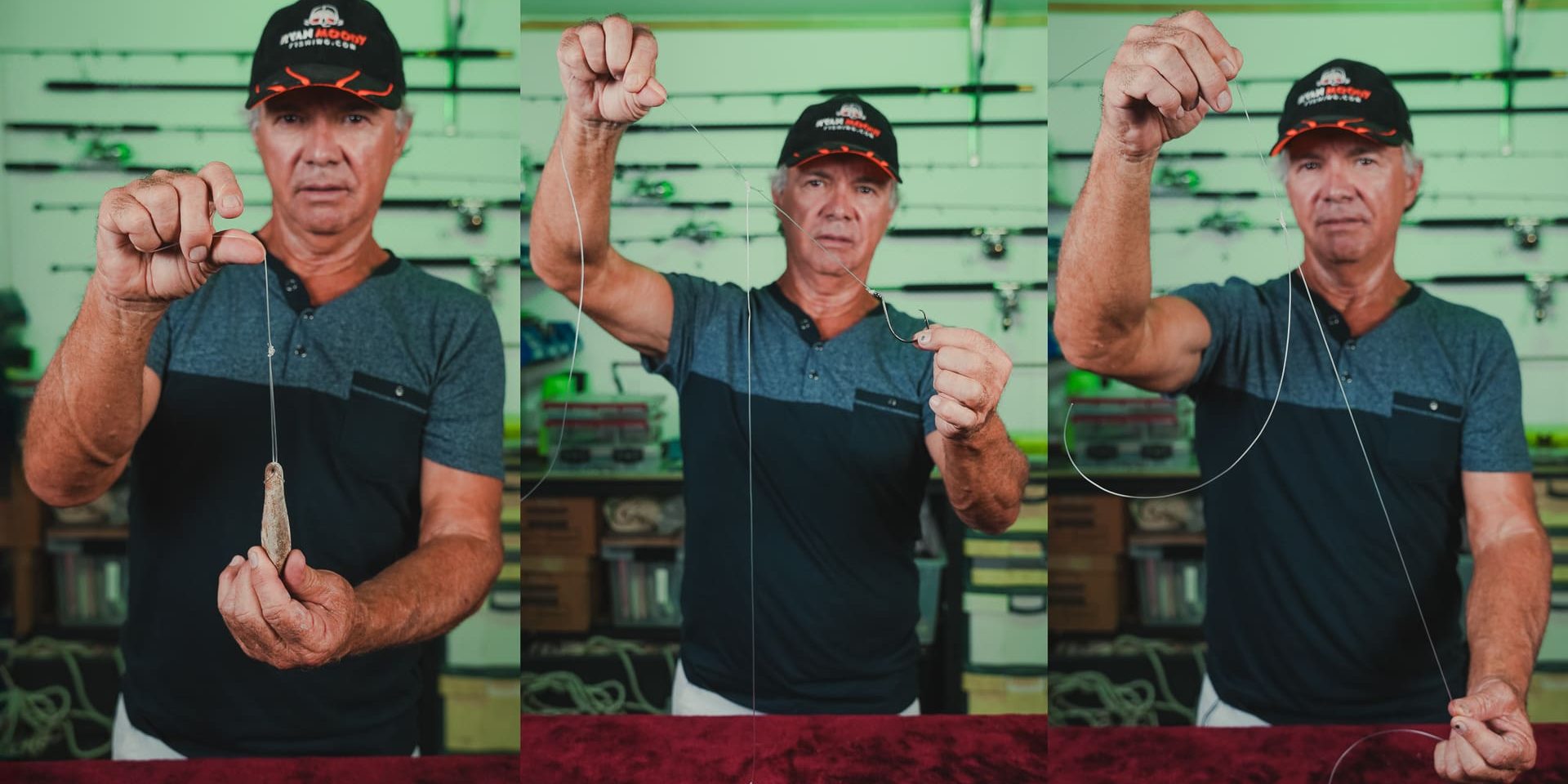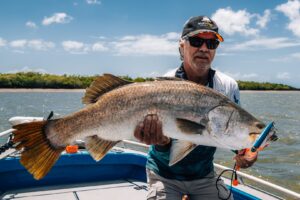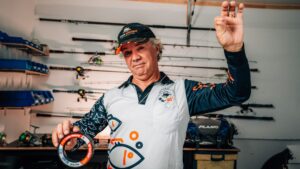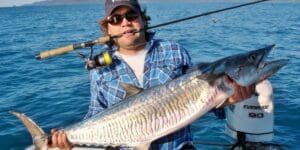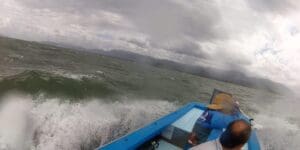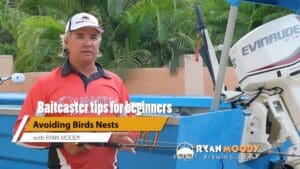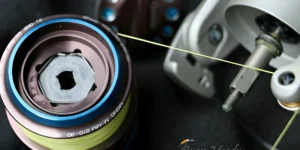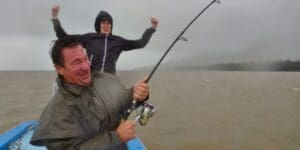The paternoster rig setup is a go-to rig for many anglers, perfect for suspending bait off the bottom and presenting it naturally in deep water. Also called the dropper rig, it’s an essential rig for offshore fishing, reef fishing, and even inshore applications where a running rig might not be suitable.
If you haven’t yet learned how to tie the paternoster rig, make sure to check out our blog on how to tie a Paternoster rig before reading further.
Hack #1: Switch to a Single Strand for Finicky Fish
The standard paternoster rig setup uses a dropper loop knot with two strands of leader, which makes it strong enough for species with abrasive mouths, like barramundi. However, in clear water or when targeting finicky fish, a bulky rig can sometimes spook your target.
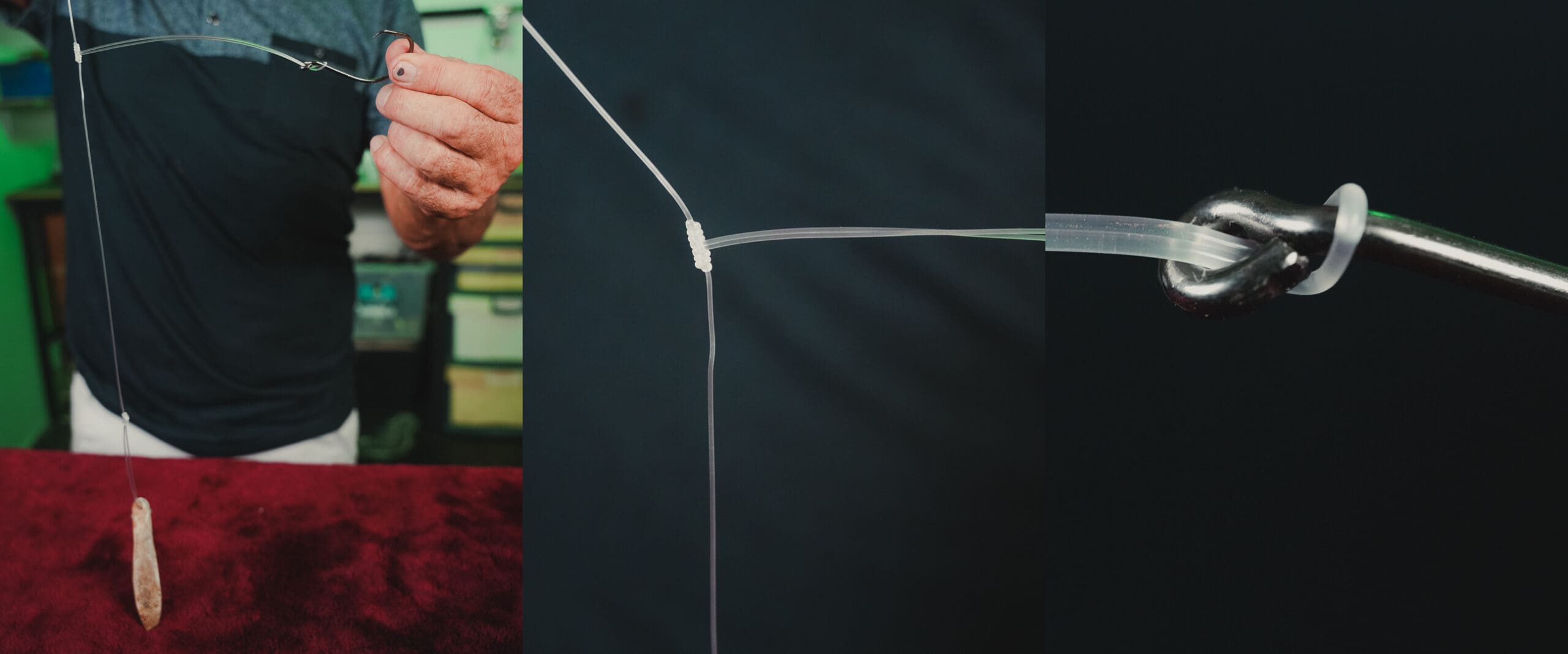
How to Modify It:
Instead of keeping the dropper loop as a double strand, you can snip off the bottom strand, leaving only a single line to tie your hook. This removes extra bulk, making the rig more streamlined and less visible in clear water.
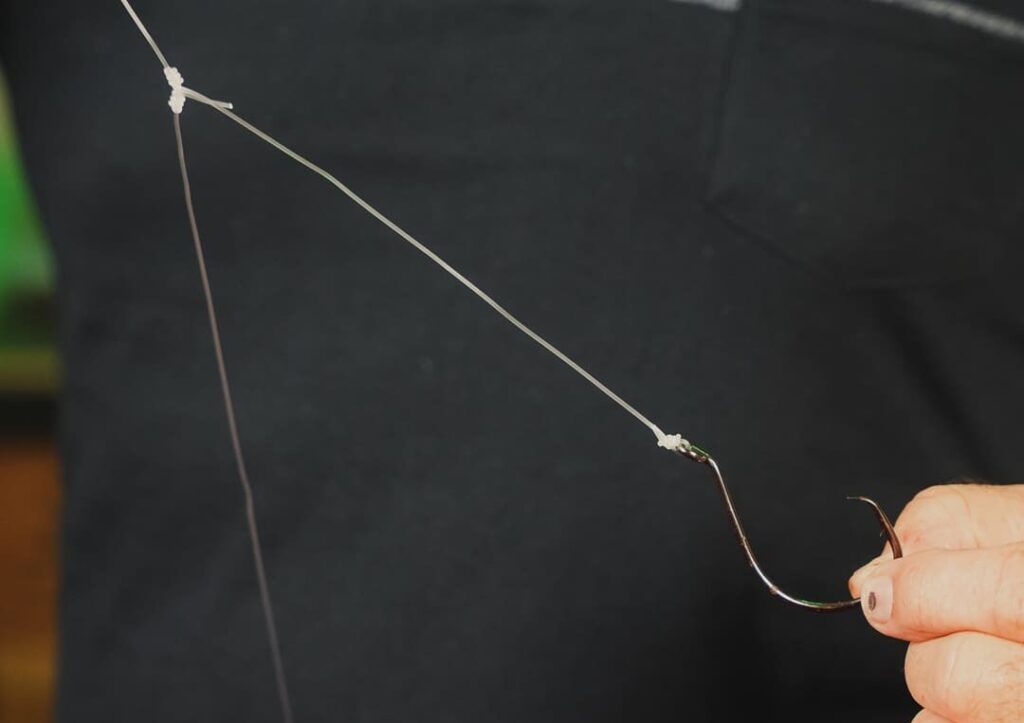
Why it works:
- Ideal for offshore species that are leader-shy and prefer a more natural bait presentation.
- Reduces the amount of visible hardware in front of your bait, increasing your chances of a bite.
- Works well when using smaller live bait or chunk bait.
Hack #2: Quick-Change Sinkers with a Loop Knot
If you’ve fished offshore, you know how much the current can change from hour to hour. One moment you need a heavy sinker to hold the bottom, and the next, the current slows, and you need to lighten up. The problem? If you tie your sinker with a standard knot, you have to cut and retie every time you adjust the weight.
The Solution:
Instead of tying your sinker with a traditional knot, use a loop knot at the bottom of your leader.
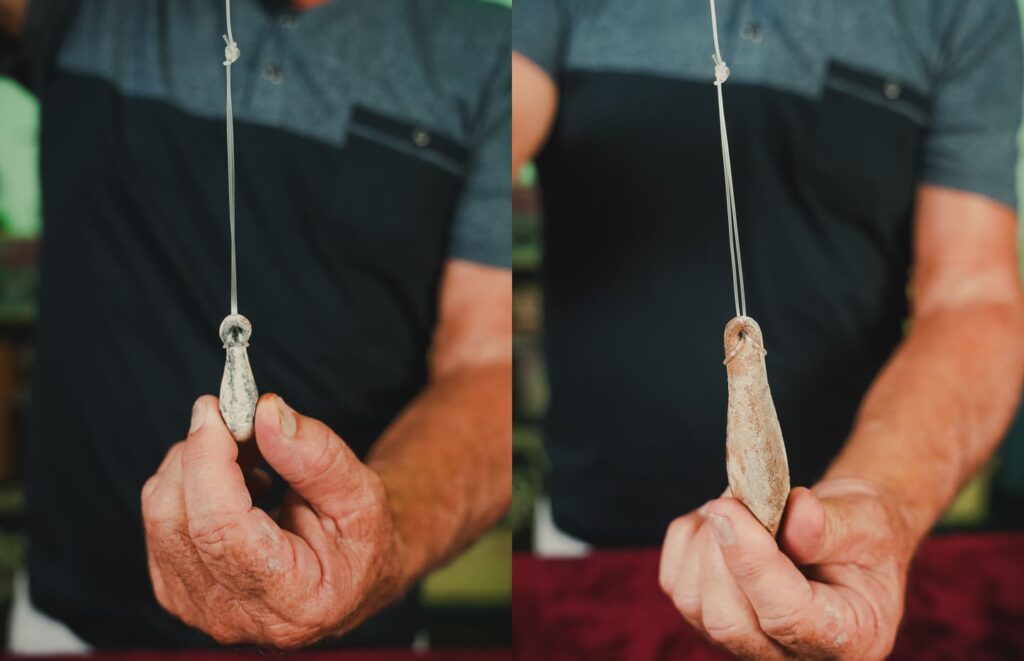
How it helps:
- Allows you to swap sinkers quickly without cutting your rig.
- Saves time, keeping you fishing instead of constantly retying.
- Perfect for deep offshore waters, where current shifts frequently.
While this sinker-swapping trick helps you adapt on the fly, having the right gear from the start makes a big difference too. If you’re curious about the tackle I rely on, grab the Gear & Tackle Cheat Sheet — it’s a solid starting point for setting up your own gear like I do.
Hack #3: Quick Fix for a Bite-Off Without Retying
Nothing’s worse than hooking up to a mackerel, shark, or toothy critter and getting bitten off, leaving you with a shorter leader and no way to tie a new dropper. Normally, this means cutting off your entire line to leader system and starting over—but there’s a much faster fix.
The Fast Fix:
Instead of retying your wind on leader system, take a new length of leader (about the same length as your original dropper) and attach it to your shortened leader using an Albright knot.
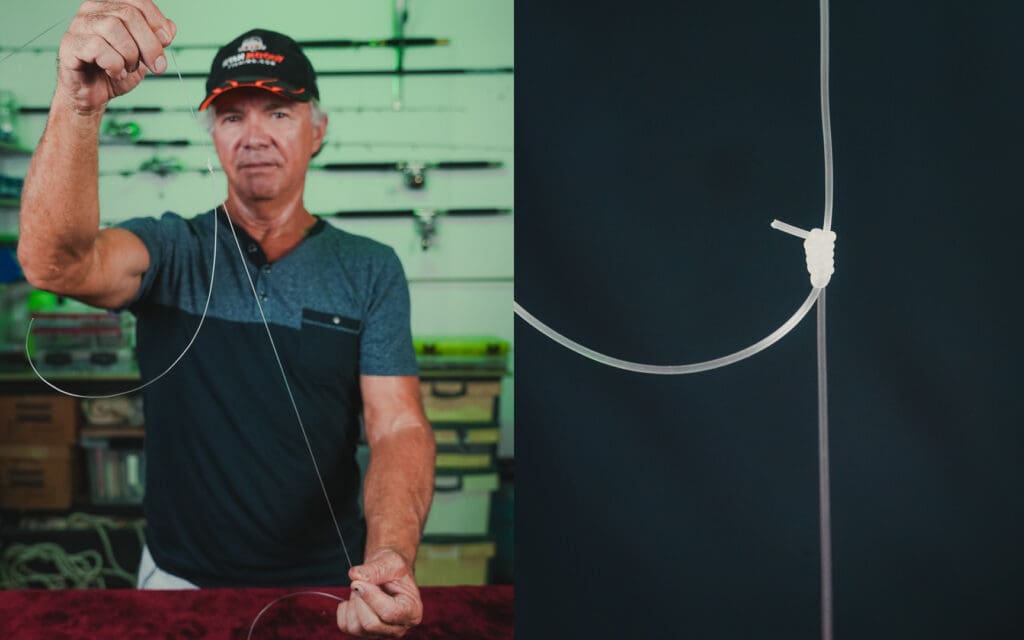
Why this works:
- Saves time by avoiding a full rig redo.
- Allows you to quickly get back in the water instead of sitting there retying a rig from scratch.
- Ensures your leader is still long enough to prevent fish from breaking off near the structure.
In the video below, I show you exactly how I fix a bite-off using the Albright knot and a fresh piece of leader.
More Paternoster Rig Tips and Resources
These three paternoster rig setup hacks will make your rig more efficient, adaptable, and easier to use. Whether you need to lighten up your rig for finicky fish, swap sinkers quickly, or recover from a bite-off without retying, these tricks will keep you fishing instead of fumbling with gear.
If you’re serious about improving your paternoster rig setup, be sure to check out our other related blogs:
- Paternoster Rig In Heavy Structure – Learn how to adapt the paternoster for snag-prone areas.
- Best Rig For Coral Trout – See how the paternoster compares and when to use each, especially around reef systems.
- How to Tie a Uni Knot or Blood Knot – Perfect for attaching hooks when using the single-strand dropper.
Looking for more ways to improve your fishing success?
Make sure to check out our free resources:
- Gear & Tackle Cheat Sheets – Discover the exact rods, reels, lines, hooks, and marine electronics I use.
- Sounder Cheat Sheets – Get better at interpreting your sounder to find fish faster.
- Fishing Workshops – Learn how to target species like barra & fingermark with in-depth pro tips.
They’re all available on our free training page and designed to help you catch more fish in less time.




